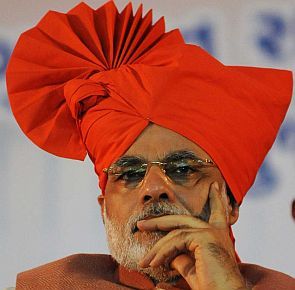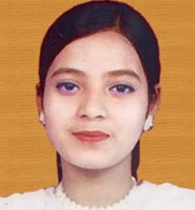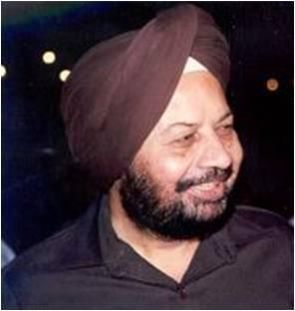The officers are also angry that the CBI is targeting one of their own, IB’s Rajendra Kumar.
|
|
29th Jun 2013
|
 |

Amit Shah
he Central Bureau of Investigation is making preparations to indict
Amit Shah, a Narendra Modi confidant, who now looks after BJP affairs in
UP, in the charge sheet that it will file in the Gujarat High Court on 4
July in the Ishrat Jahan case. CBI is also trying hard to corner
Narendra Modi, in order to arrest the BJP momentum before the general
election in a move that could be helpful to Congress. However, officers
in the Intelligence Bureau (IB) and bureaucrats in the Ministry of Home
Affairs (MHA) are being openly sceptical of this effort, pointing out
that at best the "evidence" assembled by CBI is "open to
interpretation". IB and MHA are also angry that CBI is targeting IB
officer Rajendra Kumar, in the process. Sources say that Kumar could
also face arrest.
BJP, which has been arousing public opinion against the politicisation of CBI by the government, believes that Narendra Modi will not be charge-sheeted as of now as the CBI does not have any evidence against him but does not rule out the possibility that a case could be manufactured against Modi. According to sources, the CBI's "evidence" against Shah includes the record of phone calls that were exchanged between Shah and IPS officer D.G. Vanzara before and after Ishrat was killed in the encounter on 15 June 2004. Rajendra Kumar was the IB officer who informed the Gujarat police about an impending attack on Modi by a Lashkar-e-Taiba module of which Ishrat Jahan was allegedly a part. Privately, IB and MHA officials accept that the whole "drama" being played out by the CBI is being managed by the UPA government to derail Narendra Modi's campaign. "Obviously political hands are driving the CBI investigation. However, in the midst of achieving their political objective, they are damaging the relationship between government agencies that handle national security. First the CBI questioned the IB and now they are questioning Home Ministry officials. What message does this give? Officials are angry and disturbed that after 8-9 years of an incident they are being called and questioned. Such a situation has never arisen before where the CBI is at loggerheads with the Intelligence Bureau and now with the Home Ministry," a senior MHA official stated. Commenting on recent media reports which "revealed" that Vanzara had called Shah on the day Ishrat was killed, an MHA official said that this was routine. "It is the duty of an officer to keep his minister aware of developments in such cases, especially in this case when it was about a group of LeT operatives who were on a specific mission. In the past also there have been several instances in different states where police officials have called up their political bosses, many times at odd hours, to apprise them of the developing situation." Media reports also claimed that the CBI was going to mention in its charge sheet that Shah talked to Modi on that day. "Everybody knows that the cases against Modi and Shah are politically motivated. There is nothing unusual about a Home Minister talking to his Chief Minister. There are no details of what transpired between the two. Therefore, it is clear that our leaders are being targeted intentionally," said UP BJP spokesperson Vijay Bahadur Pathak.
The MHA officer told this newspaper that whatever "evidence" has come out in public or has been shared with the MHA until now "is open to interpretation". "The MHA has strong evidence to prove that Ishrat and the three men accompanying her were Lashkar operatives. The input that Rajendra Kumar shared with the Gujarat police was strong and credible and the MHA will stand by him on this issue," an official said. A Gujarat High Court division bench of Justices Jayant Patel and Abhilasha Kumari on 14 June told the CBI to focus on a proper investigation rather than determine whether the IB data that Ishrat was an LeT operative was genuine or false. However, the MHA is unlikely to give sanction to the CBI to prosecute Rajendra Kumar, who is now Special Director with the IB. The MHA is also reluctant to share the files of the encounter with the CBI. But if push comes to shove, the MHA will present the documents/file noting to court to counter the CBI's claim that the intelligence provided to the state police was not genuine. According to officials, if Rajendra Kumar is "victimised", then it will prove to be detrimental for national interest. "If Kumar is punished, after he retires on 31 July as is being speculated, then you can imagine how bad it will be for our officers. They will think twice before sharing any intelligence inputs," the official added. A visibly tense Home Secretary R.K. Singh, who is retiring on 30 June, recently held a meeting of senior officials including Dharmendra Sharma, who was the Joint Secretary, Internal Security, between 2008 and 2013. "The general opinion is that the permission to prosecute Kumar cannot be given to the CBI. He was doing his job and till now nothing has come up which can prove that he was a part of any conspiracy. The evidence given by CBI against Kumar is not credible enough," an MHA official said. The MHA, on 9 August 2009, in an affidavit to the Gujarat High Court stated that the four people who were killed were LeT terrorists. It had also objected to the CBI inquiry. However in a second affidavit filed a month later, the MHA changed its stand, stating that intelligence inputs about the persons killed did not constitute conclusive proof. It also supported a CBI probe into the encounter. The CBI is now focusing its attention on the bureaucrats under whom the affidavit was changed. One of the officers, R.V.S. Mani, who submitted the two affidavits, has already been questioned by the agency. The agency on its part feels that it has enough evidence to nail Kumar and does not need the permission of the MHA. "Let the court decide the culpability of the official. We have enough proof to show his involvement," an agency official stated. According to officials, seeking such sanction is mandatory under Section 197 of the Criminal Procedure Code (CrPC). "Unless and until the Home Ministry gives its sanction, Kumar cannot be prosecuted. The competent authority to grant or deny sanction to prosecute an IPS officer is the MHA," the official added. Source: http://www.sunday-guardian.com/news/ib-home-ministry-sceptical-as-cbi-prepares-to-jail-amit-shah#.UdBuBwP2HLg.twitter |


 T
T The CBI-IB tussle in the Ishrat Jahan encounter case is an avoidable conflict, says V G Vaidya
The CBI-IB tussle in the Ishrat Jahan encounter case is an avoidable conflict, says V G Vaidya

 T
T